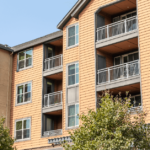The Low-Income Housing Tax Credit (LIHTC) is a foundational element in the framework of Affordable Housing Construction in the United States. Since its inception in 1986, it has facilitated the development of millions of affordable housing units, serving as a crucial mechanism for communities to address housing shortages. However, the effectiveness of LIHTC 101 can be significantly enhanced through active local engagement and support.
This blog post delves into the basics of LIHTC 101 and explores why local involvement is key to maximizing its benefits.
Understanding LIHTC 101 and Affordable Housing Construction
LIHTC 101 offers tax incentives to developers to encourage the construction and rehabilitation of affordable rental housing for low-income Americans. Here’s a simplified breakdown of how the program works:
- Credit Allocation: States receive an annual budget based on their population to allocate to developers in the form of tax credits.
- Types of Credits: The program provides two types of credits:
- 9% Credits: Highly competitive, these credits can finance around 70% of the eligible costs of new constructions or rehabilitations without federal subsidies.
- 4% Credits: Available as non-competitive credits, they cover about 30% of the eligible costs but must be paired with tax-exempt bonds.
Developers awarded these credits sell them to investors to generate equity. The resulting capital reduces the need for traditional financing, which allows developers to offer more affordable rents.
The Role Of Local Involvement in Affordable Housing Construction
While LIHTC 101 operates under federal guidelines, the local impact of these projects can be profound. Here’s why local engagement is crucial:
- Tailored Solutions to Housing Needs: Local governments and community organizations understand their unique housing challenges best. By being involved in the planning and implementation stages, they can ensure that LIHTC 101 projects address specific local needs such as family housing or senior accommodations.
- Enhanced Economic Impact: Local involvement can maximize the economic benefits of LIHTC 101 projects. These projects can stimulate local economies and create jobs by prioritizing local contractors and service providers.
- Streamlined Processes: Local entities can work alongside state agencies to streamline the approval processes for LIHTC 101 projects, reducing delays and helping to bring critical housing online faster.
- Community Support and Sustainability: Projects that are developed with local input are more likely to gain community support. This support is crucial for the long-term sustainability of Affordable Housing Construction projects, as it promotes a cooperative approach to maintenance and compliance with affordable housing guidelines.
- Integration with Local Policies and Programs: LIHTC 101 projects can be more effective when they are integrated with other local housing initiatives and Home rehabilitation. For example, combining LIHTC with local housing trust funds or property tax incentives can enhance the affordability and quality of housing.
Why Go Local?
Going local with LIHTC 101 projects ensures that the developments are not just about adding housing units but about creating homes that fit the community’s cultural, economic, and social fabric.
Local engagement helps bridge the gap between national funding and community-specific needs, leading to more successful and sustainable housing solutions.
Conclusion
LIHTC is a powerful tool for fostering Affordable Housing Construction and Development. However, its success is significantly amplified by local engagement. By going local, communities can ensure that LIHTC 101 projects are not only successful in terms of numbers but also in delivering tangible benefits to the people who need them most.
Thus, effective collaboration between federal, state, and local entities is essential for crafting vibrant, inclusive communities through Affordable Housing Construction.
Contact us today for more information.










